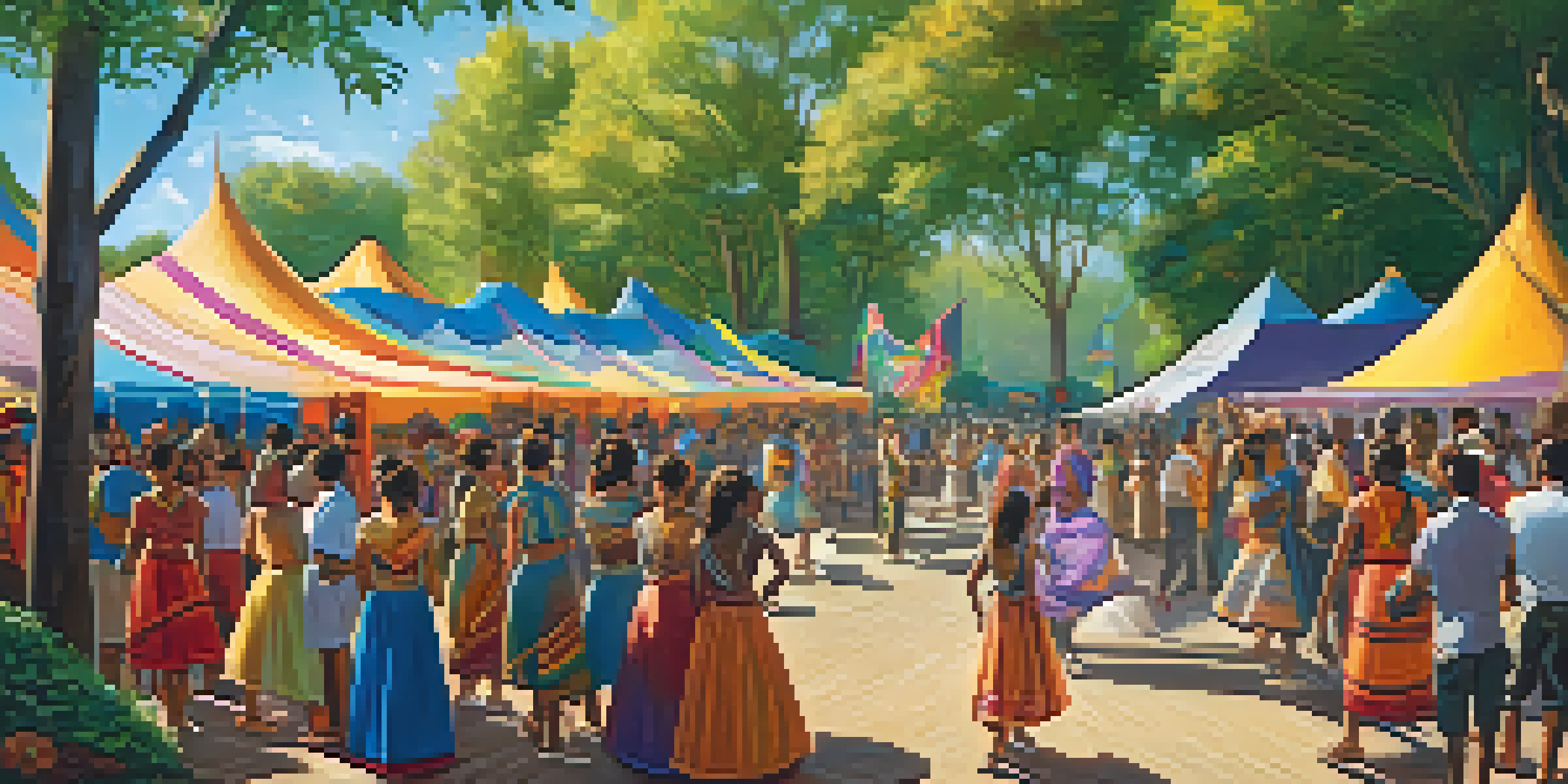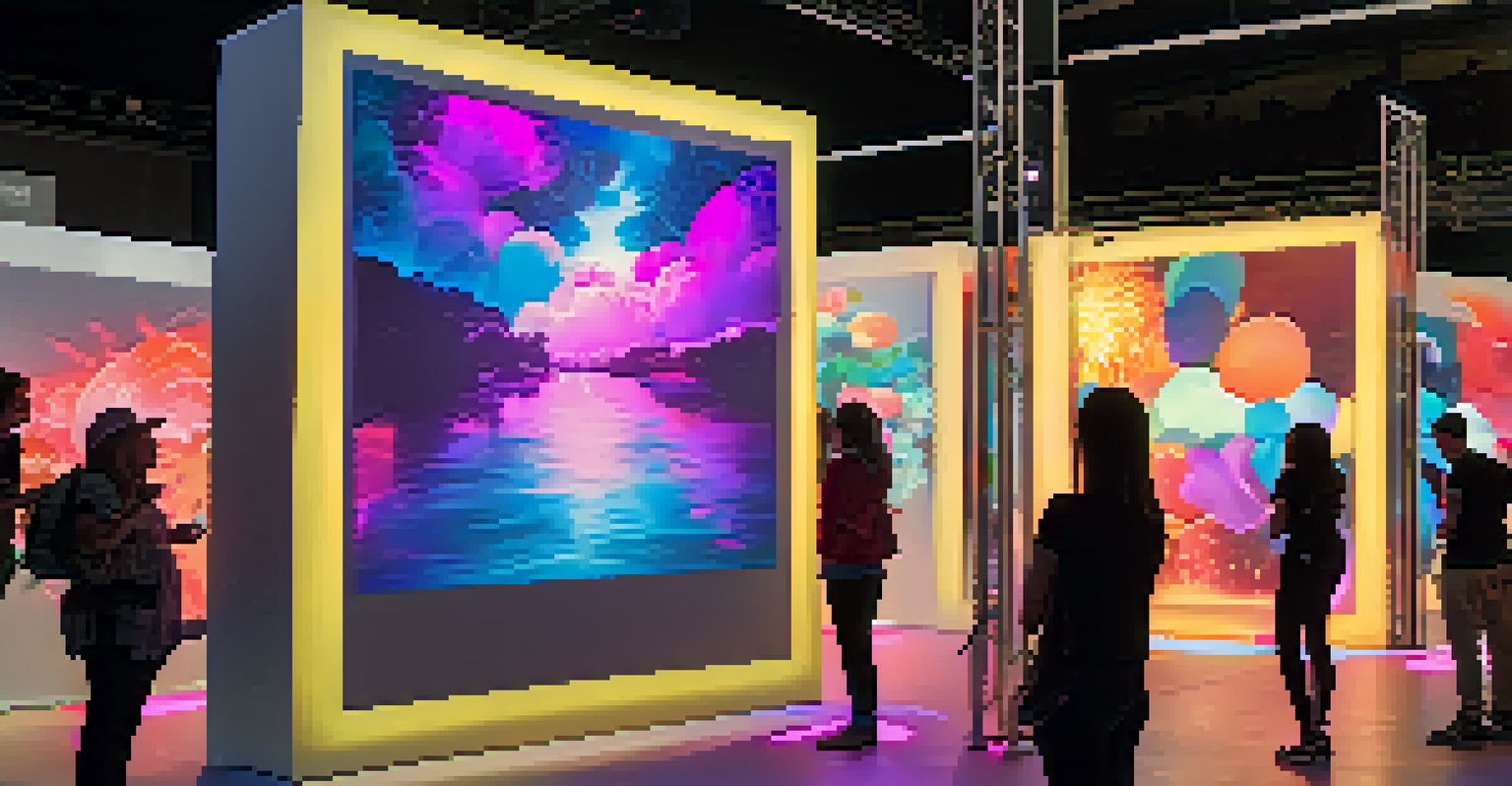National Art Festivals Showcasing Diverse Artistic Expressions

What Are National Art Festivals and Their Importance?
National art festivals are vibrant celebrations of creativity that showcase a wide range of artistic expressions. These events bring together artists, performers, and audiences from diverse backgrounds, fostering a sense of community and cultural exchange. They serve as a platform for both established and emerging artists to share their work, making art accessible to everyone.
Art is the most beautiful of all lies.
The importance of these festivals goes beyond mere entertainment; they play a crucial role in promoting cultural heritage and identity. By highlighting various artistic traditions, they encourage appreciation for the richness of different cultures. This not only enriches the local community but also attracts tourists, boosting the economy.
Moreover, national art festivals often feature workshops and discussions that deepen the understanding of art forms. Attendees can engage with artists, learn new skills, and gain insights into the creative process. These interactive experiences make art more relatable and inspire future generations of artists.
Celebrating Cultural Diversity Through Art
One of the most beautiful aspects of national art festivals is their ability to showcase cultural diversity. Artists from various backgrounds present their unique perspectives, often reflecting their cultural narratives through their work. This diversity enriches the festival experience, inviting attendees to explore new ideas and viewpoints.

For example, a festival might feature traditional dance from Indigenous cultures alongside contemporary visual art from urban artists. These juxtapositions help create a dialogue between different artistic expressions and encourage mutual respect and understanding. It's a reminder that art can transcend barriers and connect people.
Art Festivals Foster Community Bonds
National art festivals bring together diverse artists and audiences, enhancing community connections and cultural appreciation.
By embracing diversity, these festivals also challenge stereotypes and foster inclusivity. They provide a space where underrepresented voices can be heard, showcasing the beauty of different artistic traditions. This emphasis on diversity not only enhances the festival's offerings but also strengthens community bonds.
The Role of Technology in Modern Art Festivals
In recent years, technology has transformed how national art festivals are organized and experienced. From virtual reality installations to live-streaming performances, tech innovations provide new platforms for artistic expression. This shift allows artists to reach wider audiences and engage with them in creative ways.
Creativity takes courage.
For instance, many festivals now incorporate digital art and interactive exhibits, inviting attendees to participate actively. This interactivity not only enhances the overall experience but also democratizes art, making it more accessible to those who may not traditionally engage with it. Technology thus acts as a bridge between artists and audiences.
Furthermore, social media plays a significant role in promoting these festivals. Artists and organizers can share updates, behind-the-scenes content, and highlights, creating buzz and anticipation. This digital presence allows for a broader reach, ensuring that diverse artistic expressions resonate far beyond the festival grounds.
How Festivals Support Emerging Artists
National art festivals are vital in nurturing emerging artists by providing them with invaluable exposure and networking opportunities. Young creators often find it challenging to break into the art world, but festivals offer a platform to showcase their work. This exposure can be a game-changer for their careers.
At these festivals, emerging artists can connect with seasoned professionals, potential collaborators, and even patrons who appreciate their talent. This networking can lead to future opportunities, such as exhibitions, grants, or even mentorships. It's a unique environment where creativity thrives and relationships flourish.
Technology Enhances Artistic Expression
The integration of technology in national art festivals expands audience reach and creates interactive experiences for attendees.
Moreover, many festivals include competitions or juried exhibitions specifically designed for new artists. Winning or even participating in such events can boost an artist's credibility and visibility. This support system is essential for fostering the next generation of creators who will continue to enrich our cultural landscape.
Exploring Environmental Themes in Art Festivals
As awareness of environmental issues grows, many national art festivals are embracing themes related to sustainability and nature. Artists are increasingly using their work to comment on ecological challenges, prompting audiences to reflect on their relationship with the environment. This shift encourages a dialogue about the importance of preserving our planet.
For example, installations made from recycled materials or performances that highlight climate change can powerfully resonate with festival-goers. These artistic expressions serve not only as eye-catching displays but also as calls to action. They remind us that art has the potential to inspire change and raise awareness.
Additionally, festivals that prioritize sustainability often implement eco-friendly practices, such as reducing waste and promoting green transportation. This commitment extends beyond the art itself, fostering a culture of responsibility among attendees. By intertwining art and environmentalism, these festivals contribute to a more sustainable future.
Community Engagement and Art Festivals
National art festivals thrive on community engagement, bringing together people from all walks of life to celebrate creativity. Local residents often play an integral role in the planning and execution of these events, fostering a sense of ownership and pride. This grassroots involvement enhances the festival's authenticity and relevance to the community.
Moreover, these festivals often include community-based projects, such as murals or collaborative art installations. Such initiatives invite residents to participate actively, transforming public spaces into vibrant works of art. This engagement not only beautifies neighborhoods but also strengthens community ties.
Support for Emerging Artists
These festivals provide vital platforms for emerging artists, offering exposure and networking opportunities that can propel their careers.
By involving the community, festivals create opportunities for dialogue and connection. They provide a space for shared experiences, allowing attendees to bond over their love of art. Ultimately, this sense of community is what makes national art festivals so special and memorable.
Looking Ahead: The Future of National Art Festivals
As we look to the future, national art festivals are poised to evolve and adapt to changing cultural landscapes. The increasing integration of technology, alongside a focus on diversity and sustainability, will shape how these events are organized and experienced. This evolution ensures that festivals remain relevant and engaging for new generations of audiences.
Moreover, the ongoing dialogue around social issues and representation will continue to influence festival programming. Artists will likely use these platforms to address pressing topics, sparking conversations that resonate with attendees. This commitment to inclusivity will enrich the artistic experience and encourage broader participation.

Ultimately, the future of national art festivals lies in their ability to inspire, connect, and challenge audiences. By embracing change and fostering diverse artistic expressions, these festivals will continue to be a vital part of our cultural fabric, celebrating creativity for years to come.